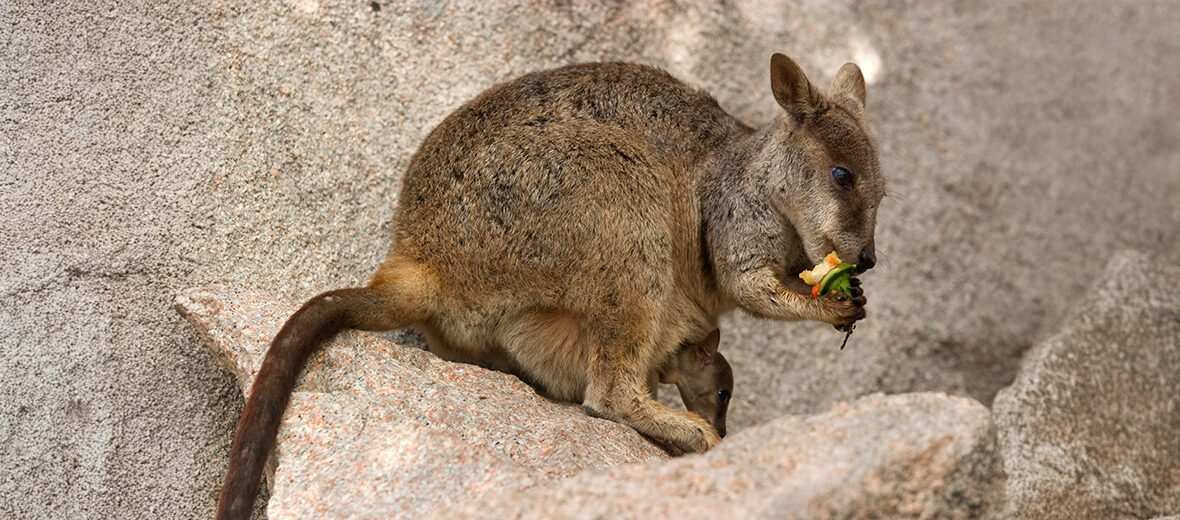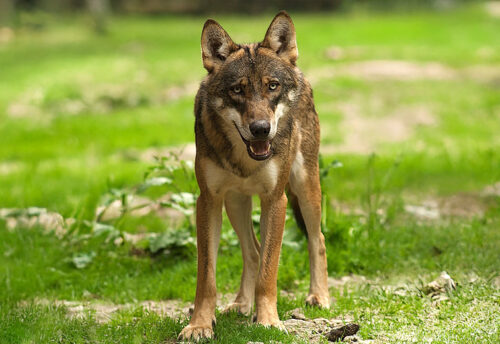
The nabarlek is a timid marsupial found in Northern Australia. They prefer scrubby vegetation over boulder piles, granitic outcrops, sandstone formations, breakaways of laterite, and rocky slopes. These macropods (marsupials) face the ongoing threats of habitat loss and destruction at the hands of fires & fire suppression; and invasive species, which bring about predation and the potential for disease. Nabarleks are listed as Endangered by the IUCN. Their population trend is listed as decreasing.
First the Stats…
Scientific name: Petrogale concinna
Weight: Up to 3.53 lbs.
Length: Up to 14.37 inches, plus up to a 12.2 inch tail
Lifespan: Up to 11+ years
Now on to the Facts!
1.) Red foxes and feral cats are their primary predators.
2.) Their chief competitor for food is the introduced and invasive European rabbit.
3.) These marsupials are nocturnal (active at night).
4.) Their name hails from the Kunwinjku language of West Arnhem Land.
5.) They have also lent their name to the music rock group from the area, Nabarlek, as well as Gwendolyne Stevens’ uranium mine.
But wait, there’s more on the nabarlek!
6.) These marsupium (pouch) wielding critters were first discovered by John Gould in 1842, who presented a description of this species to the Zoological Society of London.
7.) They are closely related to the monjon and to the short-eared rock-wallaby.
Did you know…?
It is estimated that there are fewer than 10,000 nabarleks remaining, to date.
8.) Other names for these critters are little rock-wallaby and pygmy rock-wallaby.
9.) There are 3 subspecies recognized: P. concinna canescens, P. concinna monastria, and P. concinna concinna.
10.) Their supernumerary molars are continually replaced throughout their life. A unique feature to these critters.
But wait, there’s still more on the nabarlek!
11.) Even though they are somewhat gregarious with their own kind, they are very timid and shy around other animals, and especially humans.
12.) They will often times range several hundred feet from their secure location in order to forage for food.
13.) Grasses, ferns, and sedges are all happily feasted upon.
14.) Females undergo up to a 30 day gestation (pregnancy) that yields a single joey. The joey continues to develop in their mother’s marsupium for an additional 160 days.
Now a Short Nabarlek Video!
Be sure to share & comment below! Also, check out the Critter Science YouTube channel. Videos added regularly!

Want to suggest a critter for me to write about? Let me know here.
Some source material acquired from: Wikipedia & IUCN
Photo credit: Diliff



